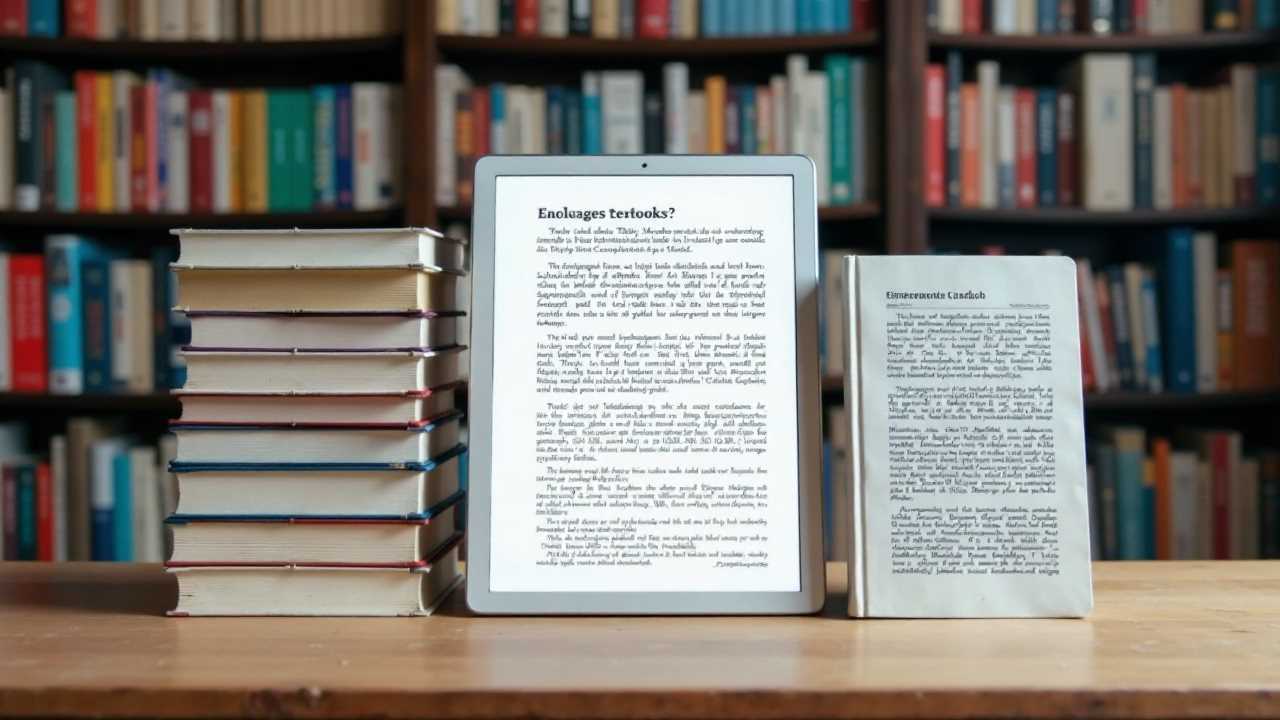
The Emergence of Digital Textbooks in Education
In recent years, digital textbooks have emerged as a transformative force in the field of education. These resources are not merely electronic versions of traditional textbooks; they represent a significant shift towards e-learning, offering interactive content that enhances the learning experience. As we embrace this change, it is essential to understand how digital textbooks integrate with various educational methodologies, including mobile learning and adaptive learning.
Understanding E-Learning and Its Benefits
E-learning has revolutionized the way students access information and engage with educational materials. Digital textbooks play a crucial role in this landscape by providing a wealth of online resources that can be accessed anytime and anywhere. This flexibility allows learners to study at their own pace, catering to individual learning styles and preferences.
The interactive nature of digital textbooks fosters a more engaging learning environment. Features such as quizzes, videos, and simulations encourage active participation, making the learning process more enjoyable and effective. This shift from passive reading to interactive engagement is a hallmark of modern education, ensuring that students retain information better and develop critical thinking skills.
The Role of Mobile Learning in Education
Mobile learning has gained immense popularity, particularly among younger generations who are accustomed to using smartphones and tablets. Digital textbooks are ideally suited for this format, as they can be easily accessed on various devices. This accessibility ensures that learning is not confined to the classroom; students can study while commuting, waiting in line, or during breaks.
The integration of multimedia content within digital textbooks further enhances the mobile learning experience. Videos, podcasts, and interactive graphics can be seamlessly incorporated, providing diverse ways for students to engage with the material. This multimedia integration caters to different learning preferences, ensuring that all students can find a method that resonates with them.
Adaptive Learning: Tailoring Education to Individual Needs
One of the most significant advantages of digital textbooks is their ability to support adaptive learning. This approach utilizes technology to tailor educational experiences to individual student needs. Digital textbooks can track a learner's progress and adapt the content accordingly, providing personalized pathways that address strengths and weaknesses.
For instance, if a student struggles with a particular concept, the digital textbook can offer additional resources, such as practice exercises or explanatory videos, to reinforce understanding. This personalized approach not only enhances learning outcomes but also fosters a sense of ownership over the educational process, empowering students to take charge of their learning journeys.
Interactive Content: Engaging Students Like Never Before
The incorporation of interactive content within digital textbooks is a game-changer for education. Traditional textbooks often present information in a static format, which can lead to disengagement. In contrast, digital textbooks offer a dynamic learning experience through features such as clickable diagrams, embedded quizzes, and discussion forums.
These interactive elements encourage collaboration and communication among students, fostering a sense of community even in remote learning environments. By engaging with peers and instructors through these platforms, students can deepen their understanding of the material and develop essential social skills.
Online Resources: Expanding the Learning Horizon
Digital textbooks serve as gateways to a vast array of online resources. Students can easily access supplementary materials, such as academic journals, research articles, and educational videos, directly from their textbooks. This wealth of information enriches the learning experience, allowing students to explore topics in greater depth.
Moreover, the ability to link to external resources encourages critical thinking and independent research. Students are no longer limited to the information presented in their textbooks; they can seek out diverse perspectives and engage with current developments in their fields of study.
Multimedia Integration: A Richer Learning Experience
Multimedia integration is a cornerstone of digital textbooks, providing a richer and more immersive learning experience. By combining text, audio, video, and interactive elements, digital textbooks cater to various learning styles and preferences. This approach not only enhances comprehension but also makes learning more enjoyable.
For example, a history digital textbook may include video interviews with historians, interactive timelines, and virtual tours of historical sites. Such multimedia elements bring the subject matter to life, allowing students to connect with the content on a deeper level.
Conclusion: The Future of Learning with Digital Textbooks
As we look to the future, it is clear that digital textbooks will continue to play a pivotal role in the evolution of education. Their integration with e-learning, mobile learning, and adaptive learning methodologies ensures that students receive a personalized and engaging educational experience.
By embracing the power of digital textbooks, educators can create dynamic learning environments that foster collaboration, critical thinking, and a lifelong love of learning. As technology continues to advance, the potential for digital textbooks to transform education is limitless, paving the way for a brighter future for learners everywhere.
 Careers in EducationElementary EducationHigh School EducationEducational TechnologyTeaching StrategiesSpecial EducationPrivacy PolicyTerms And Conditions
Careers in EducationElementary EducationHigh School EducationEducational TechnologyTeaching StrategiesSpecial EducationPrivacy PolicyTerms And Conditions
